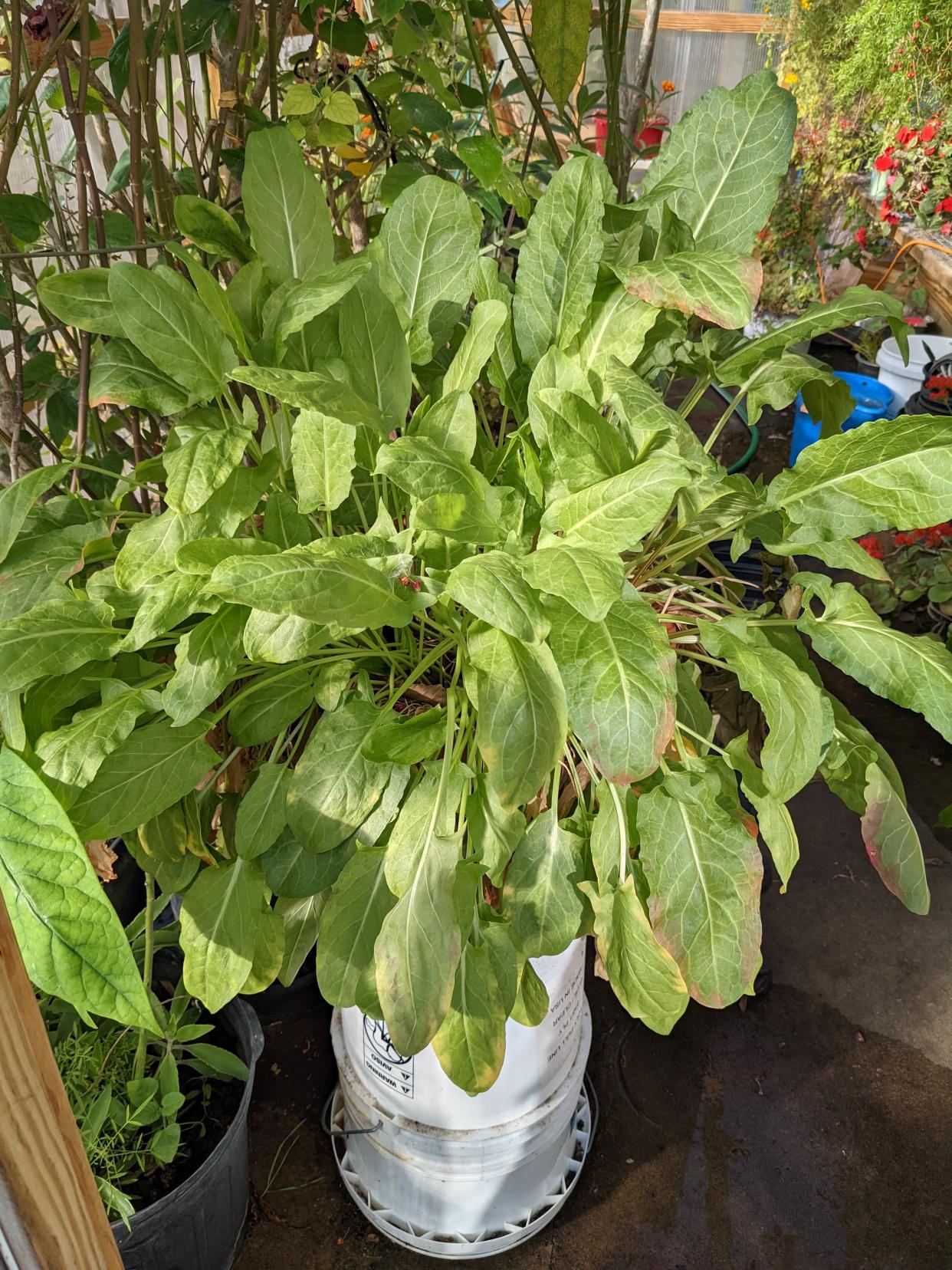Gardens of the Cross Timbers: Cabin Fever


Before and after the Great Backyard Bird Count came the largest contingencies of red-winged blackbirds. They are so weather fickle. Cold weather drives them to the feeders, but during warmer weather they prefer to search for food in the fields near areas of water. Last Wednesday, as the temperatures hovered at 14 degrees above zero and sleet accumulated beyond an inch thick, the white ground became black with birds.
Couldn’t leave the cardinals, sparrows, juncos, blue jays and other local birds to starve after the red wings cleaned out the feeders. In between flock attacks, more seed was added for the rest. So many birds were behind my house, the water in the bird bath never froze until darkness settled each night.
Three- and one-half days we were holed up in the house, only venturing out to check the mail and tend to the birds. Trapped indoors. The road in front of the house had become a bed of sleet before transitioning to a slab of solid ice. Even four-wheel drive trucks traveled as if on eggshells. Incredibly slick egg shells. On the third day, temperatures rose toward freezing, the sun attempted to shine and the sleet on the roof melted, but the water instantaneously froze as it hit the concrete porch, creating a double hazard. Wheee.
The paths around the house, surrounded by grasses and trees, were also slick and required some delicate negotiating. For food we had previously stockpiled some root veggies. Each meal had Brussel sprouts or potatoes or carrots with onions or garlic. Three more tomatoes were harvested.
The tomato plant in the greenhouse looks sad. Was it the sorrel (Rumex acetosa) springing up from the center of the plant? Many sorrels are allelopathic, which means they excrete toxins to prevent or quash any opportunistic plant growth around them. Sorrels are part of the 15% of the plant world that are non-mycorrhizal. No fungi are actively associated with their roots, in contrast to tomatoes which have arbuscular fungi within their root network.
Competition is a factor in nature. Repot the tomato? Might not like being cut back, but this could save the tomato and encourage additional sprouting. I’m not sure exactly how the sorrel got into the pot. The one large sorrel plant I do have is a male. Common sorrel is dioecious, with male and female plants. When my sorrel blooms, it produces male blossoms that send pollen into the wind. Somehow, the sorrel managed to reproduce vegetatively by inserting a little bit of itself into another pot.
Sorrel has a sharp acidic flavor due to oxalic acid. This can trigger formation of kidney stones in susceptible people or a gout flare-up. Sorrel is not the Lone Ranger since spinach, coffee, chocolate, cabbage and beans also contain oxalic acid. Sorrel is good in salads, stir fries and soups, but the herb has medicinal properties used to treat sinusitis or act as a diuretic.
The sleet showed little interest in melting. A good time to watch some TV. What a vast wasteland, especially for those of us that live in outer Slobovia with no cable or satellite, just a fancy electronically-enhanced aerial antennae fastened to the chimney. Reception can be dicey, depending on the weather. Could pick up the Public Broadcasting System (PBS). Being televised were “Cycling in Japan” and “Trails in Japan”.
Since I was riding my stationary bike each morning for twenty minutes, “Cycling in Japan” seemed a relevant first choice my first morning. Aussie Jack Reynolds was on a three-day ride through spectacular but very mountainous countryside. Time to time he would pause to investigate something of interest.
One couple was picking Adzuki beans in a field. Jack parked his bike and asked about the beans. They invited him for lunch in the small restaurant the pair owned. The cyclist was soon treated not only to Adzuki beans and rice but several other dishes made with vegetables grown in the area.
The East Asian Adzuki bean (Vigna angularis) produces bright yellow flowers that form long, cylindrical pods containing beans often red in color. The beans, rich in nutrients, can be sprouted, cooked and eaten with rice, boiled for tea or boiled with sugar to make a red bean paste.
The village was full of craft shops. One man created fine baskets by weaving stems of the willow (Salix koriyanagi), also used in making wicker furniture or wattle fences. The healthy wood had anti-bacterial properties. As all willows, this species from Korea loves moisture. Multiple slender branches and leaves may reach 15 feet in height. From a distance the willow resembles bamboo, which is why it is grown as an ornamental in the US.
Toward the end of his ride, Jack saw smoke rising over a house. Concerned, he stopped, but discovered a small family business that smoked meats and fish. As he sampled the smoked octopus, Jack was told the flavor came from the smoke of mountain cherry, oak, maple and apple wood chips.
The next morning, my ride took me along “Trails to Oishii Tokyo”. A half an hour about Silkie chickens. Silkies are small, but beautiful chickens with feathers that feel satiny. That said, the downy feathers are not waterproof like other chicken feathers. The very cool Russell Studebaker, Tulsa professional horticulturist no longer with us, adored silkies. His gentle alpha Silke hen, Miss Fluffy, often accompanied him.
The Silkie farm in Japan raised white birds with dark blue skin (all silkies have dark skin). The silkies laid one or two eggs a week. Thus, Silkie eggs were expensive; up to $6 an egg, but apparently worth it since the flavor was declared to be amazing.
By the end of the program, my ride was over and it was breakfast time. Don’t know the breed of chicken who laid the eggs in my refrigerator, but the hens were pasture-raised and their eggs were also delicious!
This article originally appeared on The Shawnee News-Star: Gardens of the Cross Timbers: Cabin Fever

